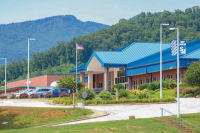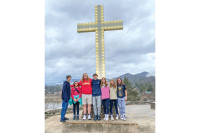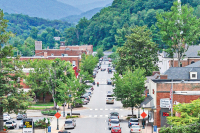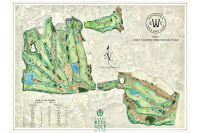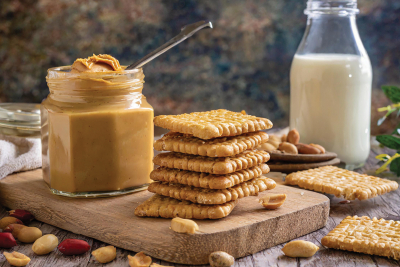Walking on water: Aura of greatness takes root at NOC
When Nantahala Outdoor Center burst onto the whitewater scene 40 years ago, it became ground zero for a new world of paddling — one where boundaries of the sport were being pushed, old paradigms were being broken, and new realities were being forged.
Paddlers wanted to be a part of it, and as a result NOC rapidly amassed a deep bench of the most elite canoeists and kayakers in the country. It was one of the few places where paddlers could make their living at their sport.
“The cadre of people we had here was unbelievable in those early days,” said John Burton, a former paddling Olympian and one of the early NOC pioneers who still works at the company today.
The dizzying concentration of paddling greats at NOC created a buzz around the Nantahala that was integral to its early success.
“This has been the center of expertise in the paddling world,” one of NOC’s founders Payson Kennedy said.
NOC was appealing to paddlers who reveled in the minutiae of the sport — particularly as they experimented with new ways of teaching the growing masses, said Bunny Johns, another NOC pioneer and one of the top female paddlers in the country in the 1970s and early ‘80s.
Related Items
Staffers would spend hours dissecting the mechanics and physics of paddling in order to hone their teaching techniques — translating the fluid, almost intuitive body movements into anatomical step-by-step instructions for beginners. Take the roll, for example, a move kayakers yearn to master.
“Before, it was like, ‘You do your body like this,’” Johns said, rotating her body and lunging her arms in the mock-movement of a kayak roll.
Over dinner, instructors would share strategies for getting students to keep their head down through the roll, or how to pick up with their knee.
“They pioneered a fairly elegant way to teach people how to do the roll,” Johns said. “It was so exciting that people talked about it all the time.”
By year three, six of the paddlers from the 1972 U.S. Olympic team were staffers at NOC, launching a tradition of greatness on the Nantahala that persists today.
Kennedy admits he can’t take credit for the strategy, however.
“It just kind of happened,” he said.
What began as an accident proved an invaluable business strategy.
“It established real street credibility,” said Mark Singleton, the head of NOC’s marketing department from 1990 to 2002.
Come to NOC, and you would be paddling among the greats. But by the 1990s, the company was getting further removed from that aura.
“You had to go back to the first 1972 Olympics to get that,” Singleton said.
Not wanting to rest on past laurels, NOC leaders realized they needed to proactively position themselves at the center of the elite paddling world.
Further, the paddling competition of the 1996 summer Olympics would be staged on the nearby Ocoee River. It was a time to shine, and an opportunity they didn’t want to squander.
“We wanted to have a big presence around that close-by Olympics,” said Wayne Dickert, a top national paddler and whitewater author who worked at NOC for two decades.
The challenge, however, was to consciously replicate the natural attraction and draw NOC had for pro paddlers in its early days. NOC no longer had a lock on the river outfitter market for paddlers wanting to make their living on the water while training. There were other places they could go and have access to whitewater as a job perk.
To lure them, NOC put up the money to hire and pay a director for the Nantahala Racing Club in the early 1990s and continuing through 1996. Anyone racing under the banner of the club would have access to a formal instructor, training regimen and organizer.
“Before, it was just a bunch of NOC staffers, a bunch of guys who said ‘Hey, we are the Nantahala Racing Club,’” Dickert said.
The plan worked. Ultimately, six out of the seven paddlers on the 1996 Olympic Team trained at NOC.
“It was a renewal of NOC’s commitment to the highest levels of the sport. It gave us something we could really hang out hat on in terms of our marketing,” Singleton said. “It didn’t only drive business, although it was certainly very successful in that, but it also helped to reinforce an athletic culture.”
The man tasked with making it happen was Joe Jacobi, who was hired as that first-ever director of the Nantahala Racing Team. Jacobi knew first hand what a great place NOC was to work while training. Jacobi came to NOC as a dishwasher in 1989 while training as an Olympic hopeful for the ’92 games.
“It was the perfect job to do while training,” Jacobi said, who washed dishes in the morning and evening and filled his days with river workouts.
Jacobi was 19 when he came to NOC, and he describes those early years as magical. He lived in company housing, had a company meal plan, used the company laundry. He didn’t have to worry about the hassles of normal life, like grocery shopping or commuting to work. His life was self-contained and revolved around the river.
“The support of the NOC community, I couldn’t put words on what that meant to me,” Jacobi said.
One of the biggest perks he remembers: the company meal plan.
“When you are training, you get hungry a lot, and the whole food thing was very appealing to us,” Jacobi said.
Aside from the food itself was the dinner table conversation.
“The quality of conversation we would get into about kayaking and paddling and how paddling was taught and sold and how you would accomplish results on the elite side of it was stimulating and engaging,” Jacobi said.
Meanwhile, the star paddlers were worth their weight in gold when it came to NOC’s appeal for guests. Sutton Bacon, who would later become NOC’s president and CEO, paddled on the Nantahala as a child during those years. Bacon ticked off the Olympic paddlers he rubbed elbows with as a boy while paddling on the same river as them — there’s been 22 Olympic paddlers on NOC’s staff in all its 40-year history.
“I remember NOC vividly in the ‘90s, which in many ways was the heyday of NOC,” Bacon said. “Part of it I would have to caveat as nostalgia, but there was an electricity. All the paddling experts who were writing the books and producing videos were NOC staff members. That level of energy was probably the biggest remembrance as an NOC guest years ago that I want to make sure we replicate today.”





